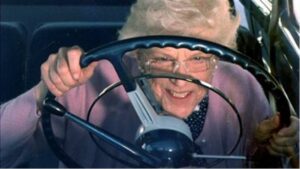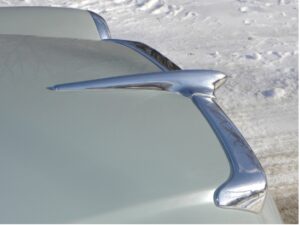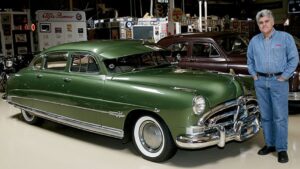The Intruder
 Cindy stood beside me clutching my arm as I flipped the deadbolt, opened the door, and pointed my shotgun at the chest of a black, angel-winged Led Zeppelin tee shirt worn by a stranger. In his mid-twenties, tall, and thin with shoulder-length blond hair and a hooked nose, he froze in the act of bringing a cigarette to his mouth and stared at the business end of my twelve gauge as though he couldn’t quite figure out what it was.
Cindy stood beside me clutching my arm as I flipped the deadbolt, opened the door, and pointed my shotgun at the chest of a black, angel-winged Led Zeppelin tee shirt worn by a stranger. In his mid-twenties, tall, and thin with shoulder-length blond hair and a hooked nose, he froze in the act of bringing a cigarette to his mouth and stared at the business end of my twelve gauge as though he couldn’t quite figure out what it was.
His look of bewilderment slowly morphed into a scowl. He dropped the cigarette and moved his hand toward his pants pocket.
“Don’t,” I said, lifting the shotgun to aim it at his face.
He froze again and glared at me.
My finger tensed on the trigger.
Neither of us moved. Five seconds passed. Ten.

This standoff occurred in 1976 in the middle of the night at the back door of our apartment in Los Angeles. When I signed on as an attorney with Latham and Watkins the previous summer, we moved into a small apartment in Santa Monica. Six months later, Cindy was pregnant with our first child and we were searching for a bigger place when a Latham lawyer offered us the opportunity to take over her lease on the downstairs unit of a duplex in Hancock Park.
Established in the 1920’s, Hancock Park is a spectacularly attractive neighborhood near downtown LA. Howard Hughes, Nat King Cole, and Mae West built palatial estates in the heart of the community in the 30’s and 40’s, and Muhammad Ali, Antonio Banderas, and Melanie Griffith lived there in the 70’s and 80’s. Covering a 1.56 square mile area, the neighborhood’s typical home is a large Tudor or Italian Renaissance-style house set back from a quiet tree-lined street.

Upscale duplexes sit on its western border. The Latham lawyer’s two-bedroom unit had a big living room, dining room, and kitchen, and nicely landscaped little front and back yards. It was located on South Orange Drive, a half block from the Third Street bus line, which I could take to Latham’s offices on Flower Street, freeing up our car for Cindy when I was at work. Best of all, the rent was low and locked-in for two years.
We moved in that winter; our son was born in January; and we came to love the place in all respects. Except one. An island of affluence surrounded by economically distressed neighborhoods in LA’s urban center, Hancock Park experienced a high rate of break-ins and burglaries on a per capita basis, and once in a great while we’d hear about a robbery that turned violent.

I didn’t worry about this much at the time because the odds were still heavily against someone breaking into our apartment. Hancock Park’s ten thousand residents stood only a one in six hundred chance of being burglarized. I mention it here because the neighborhood’s reputation for break-ins crouched in the back of my mind like an ugly little gargoyle the night the stranger appeared at our back door, and it was part of the reason I confronted him with a shotgun.
My background played a significant role, too. I grew up in rural Virginia. Most everyone in Sugar Hollow and Brown’s Cove owned guns for hunting wild game. They kept them close and knew how to use them. Burglaries on a per capita basis in those neighborhoods were zero. If you were stupid enough to break into a house there, you’d be lucky to get out alive.
At two a.m. the night the intruder approached our apartment, Cindy had just fed our baby and put him in his crib. It was a hot night, and we had the windows open. Our bedroom was at the rear of the duplex next to our driveway. As we lay awake trying to go back to sleep, I heard footsteps treading softly on concrete and saw the shadow of a tall man pass by our window.
“Who’s that?” Cindy whispered, alarmed.

The driveway was a narrow lane between our duplex and the one next door. It led to our garage and a small backyard that was walled in and completely closed off from the lots around us. There was no reason anyone would walk down our driveway except to gain access to the back of the house.
I got out of bed and looked out the back window. It was a moonless night. I could barely see the dark form of a man dressed in black standing at our garage. He seemed to be trying to open its locked door.
“What’s he doing?” Cindy said.
“Breaking into the garage.”
 I pulled on a pair of jeans. The single-shot twelve gauge I used for hunting in Virginia was propped in the corner of our bedroom closet. I grabbed it, retrieved a shell from our dresser drawer, and slipped it into the chamber.
I pulled on a pair of jeans. The single-shot twelve gauge I used for hunting in Virginia was propped in the corner of our bedroom closet. I grabbed it, retrieved a shell from our dresser drawer, and slipped it into the chamber.
Barefooted and shirtless, I headed into the kitchen where the back door was located. Through the door’s window I saw the man standing on our stoop. Cindy came up beside me and wrapped her trembling hands around my arm.
The doorknob turned, but the deadbolt held in place. The man twisted the knob again and pushed against the door.
Reacting without thinking, I flipped the bolt and opened the door. The shell in my shotgun was a number five shot, designed for small game. It would inflict serious damage to a man only at close range, so I thrust the muzzle within inches of his chest. When he moved his hand toward his pocket, I gave him a warning and shoved the gun in his face.
It seemed like we stared at each other for an eternity. Then he raised his hands slowly. “I must be at the wrong place,” he said.
He gave me a long hard look, stepped off the stoop, and walked away.
 I kept the shotgun trained on him until he rounded the corner of the house. Cindy and I rushed out to the living room. From the front windows, we watched him walk out to the street, turn right at the sidewalk, pass under a streetlamp, and disappear into the night.
I kept the shotgun trained on him until he rounded the corner of the house. Cindy and I rushed out to the living room. From the front windows, we watched him walk out to the street, turn right at the sidewalk, pass under a streetlamp, and disappear into the night.
I let out a long breath.
We considered calling the police, but we didn’t have much to report. The man trespassed but he didn’t break in, and I wasn’t sure how the police would react to my shotgun. So, we put the ugliness of that night behind us and went on with our lives.
About a month later, the LAPD busted a drug dealer operating out of a downstairs apartment at the end of our street. The duplexes on South Orange Drive are similar in architecture. Floor plans repeat about every ten structures. The dealer’s duplex resembled ours. My guess is our intruder was a user who came to “the wrong place,” as he said.
The reaction of my acquaintances to my behavior that night is mixed. My gun control friends point out that the man probably didn’t plan to harm us and brandishing a shotgun could have provoked him to react violently. I could have shot him, intentionally in self-defense or accidentally because I was scared. Either way, he would have died by my hand and my life would have been changed for the worse forever.

My gun rights friends say it was reasonable to conclude the man intended to break in and do us harm, and the police couldn’t have responded to a call in time to protect us. They maintain I had the right to defend my family with lethal force.
Both viewpoints make sense to me.
Frankly, I don’t know if I did the right thing that night. I didn’t have time to think about my actions back then but reflecting on that confrontation now as I write this post, I’d probably do the same thing again under similar circumstances. Right or wrong, with the safety of Cindy and our baby on the line, I’d put my shotgun on that guy’s chest and hope and pray it would be enough to make him walk away.
Post Script: Several recent follow-home robberies that made national news occurred in Hancock Park. A home security camera taped the most brazen incident where two men followed a mom pushing a baby stroller into her driveway and robbed her at gunpoint.




 Alarmed, I cast my light in that direction. A black snake lay coiled an arm’s length away, staring at me, its eyes glowing like little diamonds, its tongue flicking in and out.
Alarmed, I cast my light in that direction. A black snake lay coiled an arm’s length away, staring at me, its eyes glowing like little diamonds, its tongue flicking in and out.





 I was tooling down Huntington Drive in my two-toned beige and brown 1954 Hudson Hornet when smoke billowed from the hood. I hit the brakes; the Hudson lurched violently to the right; the front tire rammed into the curb; and the engine stalled out.
I was tooling down Huntington Drive in my two-toned beige and brown 1954 Hudson Hornet when smoke billowed from the hood. I hit the brakes; the Hudson lurched violently to the right; the front tire rammed into the curb; and the engine stalled out.




 Lester towed the Hudson to Brad’s shop. He “fixed” the brakes again. Since he couldn’t find anything wrong with the radiator, we tried a different engine coolant. On the way home, the interior rear-view mirror fell from its mount and shattered on the floorboard. I drove to O’Reilly Auto Parts in San Gabriel to see if I could pick up a replacement on the cheap. The elderly clerk who waited on me was familiar with Hudsons. When I mentioned my recurring boiling-over adventures, he asked if he could take a look.
Lester towed the Hudson to Brad’s shop. He “fixed” the brakes again. Since he couldn’t find anything wrong with the radiator, we tried a different engine coolant. On the way home, the interior rear-view mirror fell from its mount and shattered on the floorboard. I drove to O’Reilly Auto Parts in San Gabriel to see if I could pick up a replacement on the cheap. The elderly clerk who waited on me was familiar with Hudsons. When I mentioned my recurring boiling-over adventures, he asked if he could take a look.

 I began to think the Hudson had become my Red Chief. In O. Henry’s short story, The Ransom of Red Chief, a couple of miscreants kidnap a boy to extort a ransom from his rich dad, but the kid is such a holy terror the dad is glad to be rid of him and won’t pay. When the kid pretends he’s the fierce Red Chief, ties one of the kidnappers to a stake, and sets his pants on fire, the bad guys end up paying the dad a healthy sum to take him back.
I began to think the Hudson had become my Red Chief. In O. Henry’s short story, The Ransom of Red Chief, a couple of miscreants kidnap a boy to extort a ransom from his rich dad, but the kid is such a holy terror the dad is glad to be rid of him and won’t pay. When the kid pretends he’s the fierce Red Chief, ties one of the kidnappers to a stake, and sets his pants on fire, the bad guys end up paying the dad a healthy sum to take him back.